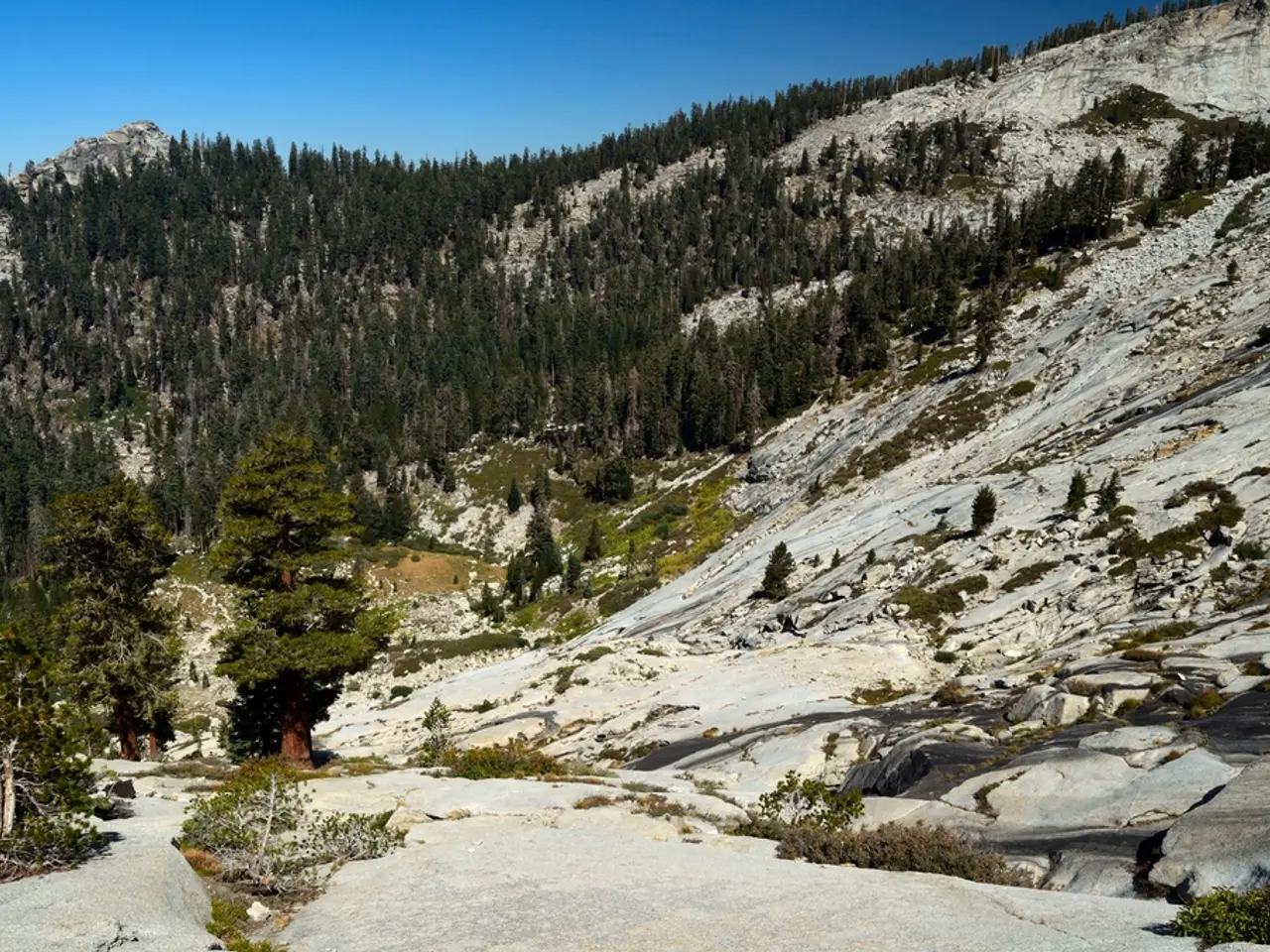Exhilarating Hiking Challenge Emerges From Washington's Perilous Summit Summit
Jack Mountain in Washington State's North Cascades National Park presents a formidable challenge for climbers, with its steep, snow-covered terrain and rugged landscape. Here's a comprehensive guide to help you prepare for this remote and thrilling climb.
**Challenges**
Jack Mountain is renowned for its difficult ascent, featuring steep, sustained climbs and treacherous terrain. Climbers face rock scrambles, potentially loose rock, and variable weather conditions common to the Cascades. Given its less frequent climbing and lack of maintenance, route-finding skills are essential.
**Recommended Routes**
The South Face route is a classic scramble approach to the summit, suitable for experienced climbers comfortable with hands-on rock sections. Climbers typically start their ascent from trailheads near Ross Lake, navigating off-trail through alpine terrain. No formal, maintained trail leads directly to the summit, so careful map and compass or GPS navigation is crucial.
**Gear Requirements**
Hiking boots with good traction for scrambling are essential, and a helmet is recommended due to the rockfall hazard. Depending on conditions, climbing gear such as a rope, harness, and protection may be necessary, especially if tackling technical rock sections on the South Face. Navigation tools like maps, compass, and GPS are also necessary. Weather-appropriate clothing and layers for alpine conditions, ample food, water, and emergency supplies are also required.
**Safety Considerations**
Check weather forecasts carefully, as mountain weather can change rapidly. Inform someone of your route and expected return time. Be prepared for loose rock and potential rockfall, making helmet use important. Have experience in route finding and scrambling in alpine terrain. Consider the physical demands and allow sufficient time; the ascent is long and sustained. Always have a turnaround plan if conditions deteriorate or if navigation becomes uncertain.
Though detailed trip reports specifically for Jack Mountain are scarce, climber resources indicate the mountain is a serious undertaking requiring technical skill and good preparation typical of North Cascades alpine climbs. It differs from popular hikes like Little Jack Mountain or Seven Fingered Jack, which have more established trails but still offer strenuous ascents.
The summit of Jack Mountain, at 9,069 feet, is the tallest promontory in the region. Climbers who reach the summit will have to contend with a knife's edge ridge, a narrow path with steep drops off of either side. The terrain on Jack Mountain is loose and steep, requiring caution and concentration.
Preparation is key to tackle the ridge safely and potentially have the adventure of a lifetime. The Jerry Lakes to the southeast of the mountain is a common starting point for climbers. Local weather forecasts should be checked, and appropriate clothing and camping gear packed for various temperatures, as this is a multi-day hike.
Experienced and capable winter climbers can climb Jack Mountain in the off-season, but will encounter slippery snow and ice. Jack Mountain is located near Northern Cascades National Park in Washington State. Full alpine hiking gear is required to climb Jack Mountain, including boots, crampons, skis or snowshoes, trekking poles, ice axes, ropes, carabiners, and rappels. Food, water, first aid, and shelter are essential items to pack for the climb.
Climbing Jack Mountain requires exposed climbing on loose surfaces, navigating steep terrain, and dealing with snow. The climb is classified as a Class 4 or Class 5 mountain, depending on the route taken. August or September is the best time to climb Jack Mountain due to the least amount of snow. Stay safe, be prepared, and enjoy the thrill of conquering Jack Mountain.
- For those planning an adventure-travel expedition, travel guides on outdoor-living and alpine climbing, such as 'Home-and-Garden's 'North Cascades Climbing Guide' or 'Lonely Planet's 'Ultimate North Cascades Adventure', might be beneficial for dealing with the challenges presented by Jack Mountain.
- Apart from the thrilling climb of Jack Mountain, lifestyle enthusiasts can also discover other aspects of the North Cascades National Park, like exploring home-and-garden trails for peace and tranquility, engaging in sports activities like fishing in Ross Lake, or immersing themselves in the beauty of outdoor-living.
- When not scaling Jack Mountain, use travel resources like reviews and online forums focused on adventure-travel and sports toDiscover less-frequently climbed mountains within the North Cascades region that offer similar challenges, beautiful vistas, and unique experiences, enabling climbers to further extend their outdoor-living and adventure travel itineraries.




